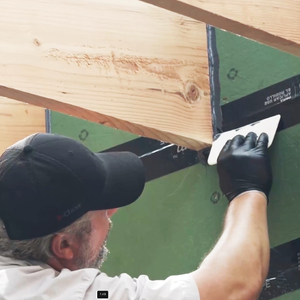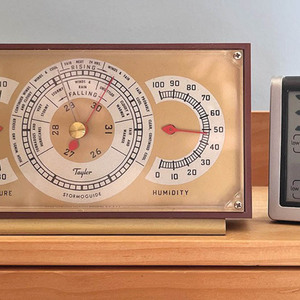Homeowner, theoretical oil in attic?
Hi, ya’ll,
I need info for my Dad in his renovation project. This is not something I’ve heard of before. Can you put a fuel-oil burning furnace in an attic? Why not, if not? Is it a dumb idea? An inefficient idea? An unsafe idea? Uncommon? Under what circs would you do it? You get extra credit for discussion.
Thanks bunches.


















Replies
I know nothing about the subject - I just want the extra credit for discussion.
(-:
I'm far from being an HVAC expert, but - The biggest drawback I know of for an HVAC system in the attic is losses through the ductwork. I think they can seal and insulaet them to some degree, but they'll never be perfect.
Hey, Boss!Situation with this house, it's all on slab, and the original heating was in slab copper radiant tubing (which has probably failed.) We're discussing possible retrofits. We can't get ductwork through the masonry interior walls, except in the addition, which are stud walls. If we use some kind of forced air retrofit, it looks like attic ductwork may be the default choice.
You may need to talk to the local building department and/or a local HVAC contractor to determine the legality of a fuel oil heater in the attic. If you can avoid having a reservoir of fuel oil in the attic, it may fly.
I see quite a few attic HVAC units here in CA, but they're all gas.
Yeah, any restrictions would probably be local. In some locales gas furnaces in the attic are common, as are oil furnaces in the crawl. Never heard of an oil furnace in the attic, but can't see any strong reason why not.
You'd no longer have gravity feed to the furnace, so some sort of auxiliary oil pump would likely be required. And extra precautions against an oil leak would certainly be advised, even if not required.
I was guessing there had to be some kind of a pump to get it up there. If the old system was in ground tank to a ground floor furnace, would it have some kind of pumping set up as well?
One would think so, though I've only got a passing familiarity with oil units.
So convenient a thing it is to be a reasonable Creature, since it enables one to find or make a Reason for everything one has a mind to do. --Benjamin Franklin
Keep in mind that there are several general problems with having a furnace in the attic, in particular the fact that you're blowing the air in from the top, so it doesn't circulate well through the rooms. Plus of course the heat losses into the attic that occur if the system isn't adequately sealed and insulated. (Assuming here we're talking forced air and not hot water.)
In NC something to consider is simply retrofitting the insulation (foam on the walls, deep cells in the attic, eg) and converting to space heaters. Or maybe you could install a hot water baseboard system -- pipes could be run through the attic and the boiler placed outside if need be.
(Where was the old boiler?)
In main part of the house (60 years old) the boiler was on the main level in a large closet in what was used as a library, very near the center of the house. In the addition we used a hotwater baseboard system with the plumbing through the addition's slab. That system, by the way, also supplied the hot water for the bathroom in the addition.It's a 2700 sq ft ranch, 96 feet by about 40 something in it's deepest dimension. This is in the mountains. It's effing cold us here.
Ask at "The Wall". They know it all ;-)
http://forums.invision.net/index.cfm?CFApp=2&reset=Y
Theodora,
I don't see a reason why you could not install a furnace up there unless code prevented you. A fire in the attic is no less unsafe than a fire in the basement. In fact, you might have a better time getting out of a house that is burning at the top than one that is burning at the bottom (smoke, etc.)
In Germany, attic-installed boilers are very common. There, the attics are insulated (hot roof) and thus thermal losses are minimal. It saves the HO a chimney (which reduces space losses inside the home) and adds space to the basement, which most people value more than attic space. All in all, such systems make a lot of sense as long as you can rely on circulators to keep the water moving.
In the old days, folk relied on gravity in air, steam and water systems to bring the cold (denser) air or water back to the furnace/boiler w/o relying on pumps. Hence the (usual) basement location and huge duct/pipe diameters of such systems. With the advent of electric motors, we have more freedom re: heating appliance placement, but you may end up fighting physics...
As others have pointed out, your biggest likely issue is air circulation, i.e. how do you convince the air to distribute nicely so that the folk living in the place do not have hot heads and cold feet. A high velocity system with a couple of low returns might do the trick.
However, my preference would be a boiler with a series of baseboard or flat panel emitters. It'll provide a heat similar to the RFH that the HO's used to enjoy and does not have to be ugly. You also get the benefit of being able to site the boiler in more locations and the fact that the penetrations you'd have to make to accomodate a hydronic heating pipe are a lot smaller than the penetrations you'd have to drill for any kind of forced air system.
Edited 5/22/2007 9:14 am ET by Constantin